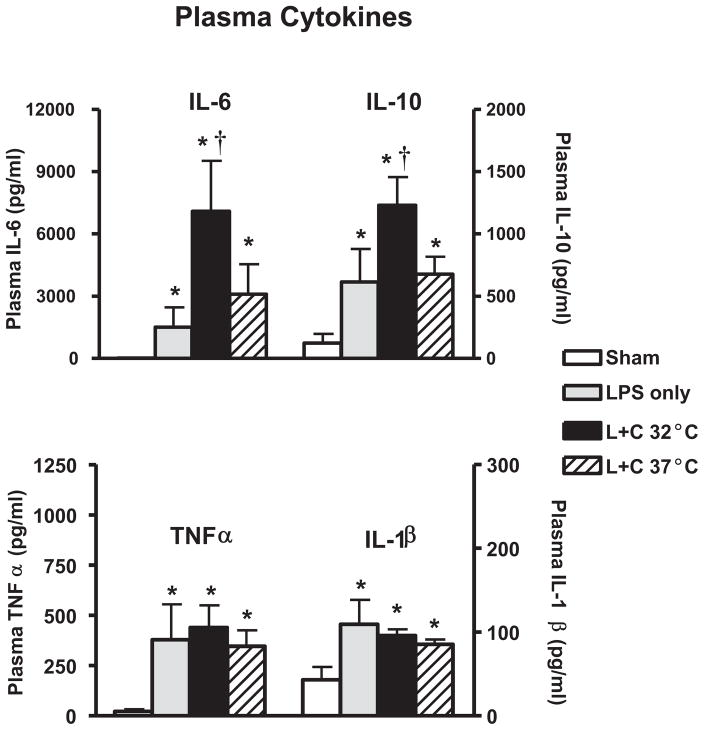Figure 2.
Chlorpromazine-induced hypothermia increases plasma interleukin (IL)-6 and IL-10 but not tumor necrosis factor (TNF)-α or IL-1β in juvenile endotoxemic mice. Juvenile mice were treated with intraperitoneal lipopolysaccharide (LPS) followed immediately by chlorpromazine (L + C), and rectal temperature was regulated to approximately 32°C (n = 14) or 37°C (n = 14) in temperature-controlled incubators as shown in Figure 1. Other groups of mice received sham treatment (n = 6) or LPS alone (n = 6) (note IL-6 and TNF-α are below the level of visibility on the graph). Six hours after LPS administration, plasma was collected for analysis of IL-6, IL-10, TNF-α, and IL-1β. *p < .05 vs. sham-treated controls. †p < .05 in hypothermic vs. normothermic mice. The data represent five independent experiments.

